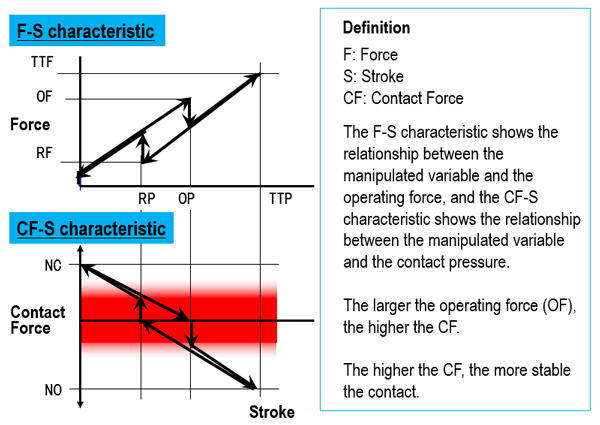What is the contact resistance of a basic switch?
ID: FAQE20018E
update:
Answer
The contact resistance is the resistance value (the initial resistance value is the CR before shipment) between the energized terminals when the contacts are in contact with each other. The resistance value of the contact area includes the conductor resistance of the spring and terminals.
The NC side (b-contact) is measured in the FP state and the NO side (a-contact) is measured in the TTP state.
Explanation
The contact resistance is the resistance value (the initial resistance value is the CR before shipment) between the energized terminals when the contacts are in contact with each other. The resistance value of the contact area includes the conductor resistance of the spring and terminals. The NC side (b-contact) is measured in the FP state and the NO side (a-contact) is measured in the TTP state.
Keep the following in mind to increase contact pressure:
- The larger the OF, the larger the contact pressure.
- The larger the OF, the larger the contact pressure.
- The contact pressure is higher at the FP and TTP points during the stroke.
Please note that in particular, contact pressure becomes almost zero near the point of contact switching (OP point, RP point), causing contact instability and potential chattering.

For more information, please see "Switch Basics" Technology / Operating Characteristics.
Quick tips
No Tips
| Product category | Switches Basic Switches |
|---|---|
| Classification | Selection, Characteristics |
| Related keywords |
|